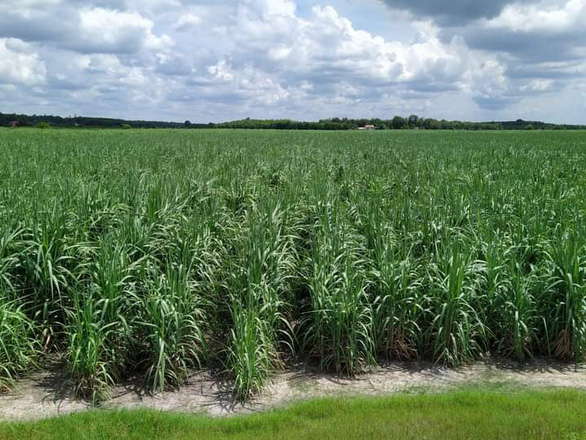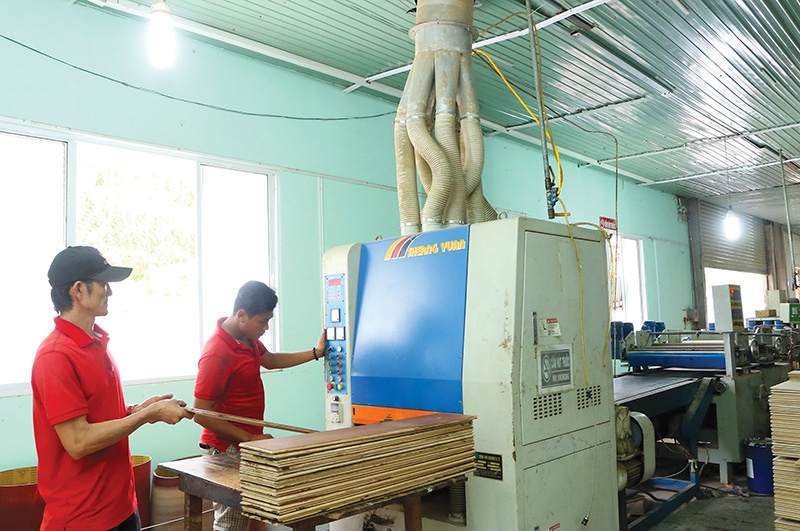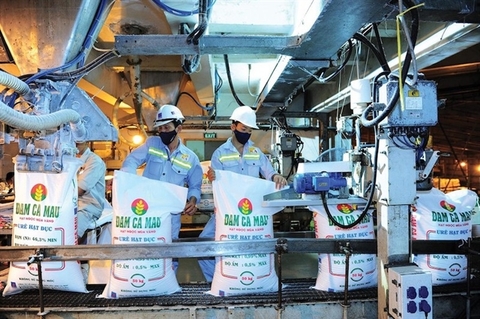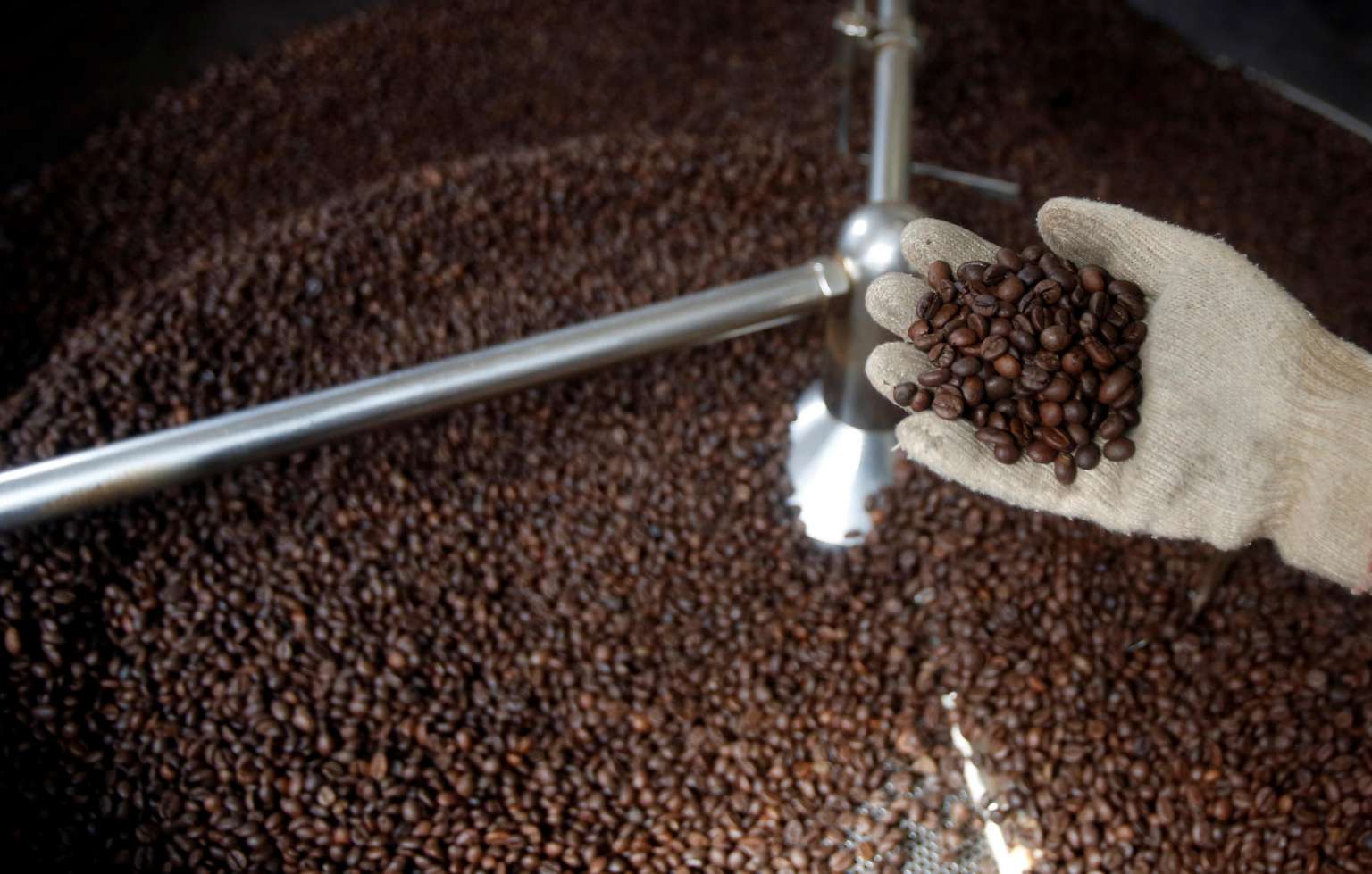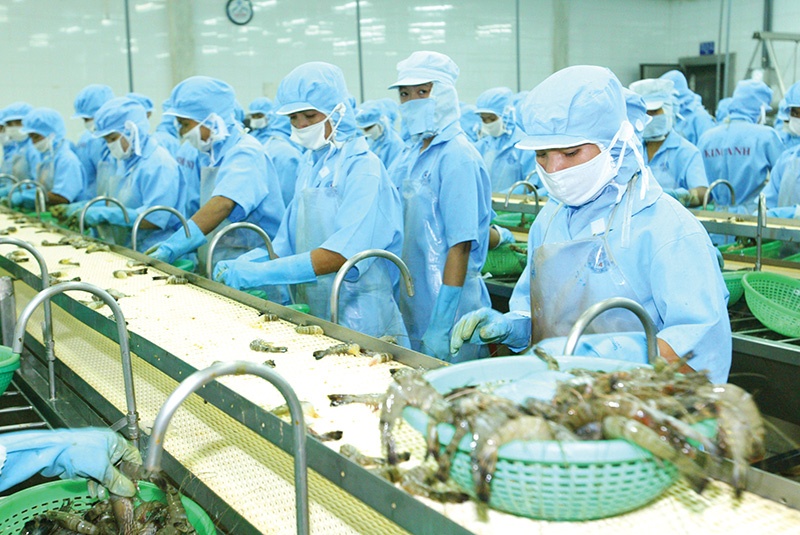Viet Nam salt industry must adapt: official
Viet Nam salt industry must adapt: official
The local salt industry must understand the needs of the market, develop standards and guidelines for farmers, and reorganise production, said Le Duc Thinh, director of the Department of Cooperatives and Rural Development under the Ministry of Agriculture and Rural Development (MARD).
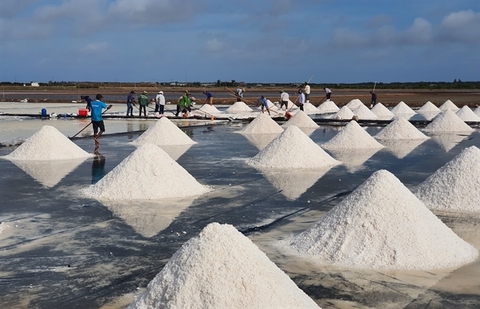
Viet Nam has advantages to help develop its salt production and processing industry, including its 3,200km coastline and high heat, Thinh said, adding that the country's salt production areas spread from north to south, creating jobs for about 21,000 households.
However, the development of the domestic salt industry has encountered many difficulties, including small-scale and scattered production, under-developed infrastructure, modest volume and ineffective application of scientific advances, he noted.
The country is home to 72 salt production and processing units, including production and business households, cooperatives and enterprises. However, most are small scale with insufficient capital and production capacity.
Bui Son Long, chairman of Sea Salt Technology JSC in Ha Noi, said at a recent webinar that the salt industry needed to make fundamental changes towards producing and processing according to the needs of the market to better meet increasing domestic and export demand.
Closer co-operation among localities with salt production areas should be also included, Long said.
Tran Thanh Nam, Deputy Minister of Agriculture and Rural Development, agreed. He emphasised the importance of finding out the needs of the market and the tastes of consumers.
"In the past, we had invested in salt industry infrastructure without knowing what consumers needed. This is the first lesson we should learn," Nam said.
"We should provide the market with the salt products it needs,” he added.
It is also necessary to focus on building geographical indications and brands in the salt industry to raise the income of both salt farmers and producers.
According to a report by MARD, Viet Nam's salt production area in 2021 reached 11,393ha, lower than the 11,926ha, 12,494ha and 13,074ha seen in 2020, 2019 and 2018, respectively.
The decreasing area of salt production was attributed to low income from salt production so salt farmers gradually converted inefficient production areas to aquaculture or switched to other occupations, resulting in several salt production areas being abandoned.
Last year, the country's salt output hit nearly 915,000 tonnes, far lower than the record of more than 1.33 million tonnes seen in 2020.
Currently, the price of unprocessed salt ranges from VND600- 2,500 per kg while industrially produced salt is sold between VND600 and VND1,500 per kg.
Viet Nam will study and pilot combining salt production and tourism to promote the sustainable development of the industry, according to the Government’s recently-approved salt industry development project for 2021-30.
Viet Nam will combine salt production with tourism at several villages, including Thuy Hai (Thai Binh Province), Bach Long (Nam Dinh), Ho Do, Ky Ha-Ky Anh (Ha Tinh), Sa Huynh (Quang Ngai), Hon Khoi (Khanh Hoa) and Can Gio (HCM City).
The project aims to develop the salt industry towards efficiency and sustainability, based on the advantages of localities with a history of salt production to increase productivity, quality and diversify salt products.
Viet Nam aims to have 14,500ha of salt farming with an output of 1.5 million tonnes per year by 2025. In the next five years, the focus will be on producing salt to meet domestic demand with healthy natural minerals and micronutrients with low sodium content.
Total salt farming is targeted to drop to 14,244ha by 2030 but annual output is hoped to increase by two million tonnes.
Salt production will be developed on an industrial scale in Khanh Hoa, Ninh Thuan and Binh Thuan provinces to meet the demand of the chemical industry and for raw materials to produce refined salt.
Smaller-scale production will be developed in Thai Binh, Nam Dinh, Thanh Hoa, Nghe An, Ha Tinh, Quang Ngai, Phu Yen, Binh Dinh, Ba Ria-Vung Tau, Ben Tre, Tra Vinh, Soc Trang, Bac Lieu, Ca Mau provinces and HCM City.
Support will be provided to develop supply chains for the salt industry.
Increasing the appliance of science and technology in salt production and processing to minimise the impact of climate change and enhancing promotions to export more salt are also part of the plan.




